The date was July 27th, 1986. It was a grey Sunday with high clouds and the occasional gusty burst of wind and rain, as the dawn broke into broad day-light, with a promise of fairly good weather all through the day. If there was any tension in the air, nobody bothered to smell it. As on many other Sundays, there was enough time for everyone to seep and enjoy a few extra cups of tea before leaving the bed. In fact, there was a sense of jubilation, a touch of festive mood – a common weakness shared by the fun-loving Gorkhas of the Hills – as everyone looked forward to the moment of the day scheduled for the performance of the rites, in which the copies of the 7th article in the Indo-Nepal Treaty of 1950, would be consigned to the flames as a token of mass-protest against the very spirit and the implication of the text of the said Treaty that stands to condemn us, in the very words of the former Prime Minister, Mr. Morarji Desai, as foreigners living on the Indian soil since and as of 1950 to enjoy the token benefits as accrued from the said Treaty. The auspicious moment selected for the observance of the rites was fixed at 2.30 P.M. The venue – Kalimpong Mela Ground.
Life in Kalimpong town on Saturday, the haat day of the week, despite the prohibitory orders as envisaged under 144 CrPC having been clamped as early as the evening of Friday, was perfectly normal. Rather, deceptive enough to instill in the people a false sense of security and assurance that the third programme the following day would be a repeat-bonanza of the ’72 hour bandh’ in middle May. An immature leadership of the Chief Convener, GNLF, Kalimpong was apparently showing in his failure to stick to the directives of the Central Command. An over-doze of valor and ambition, when discretion should have prevailed.
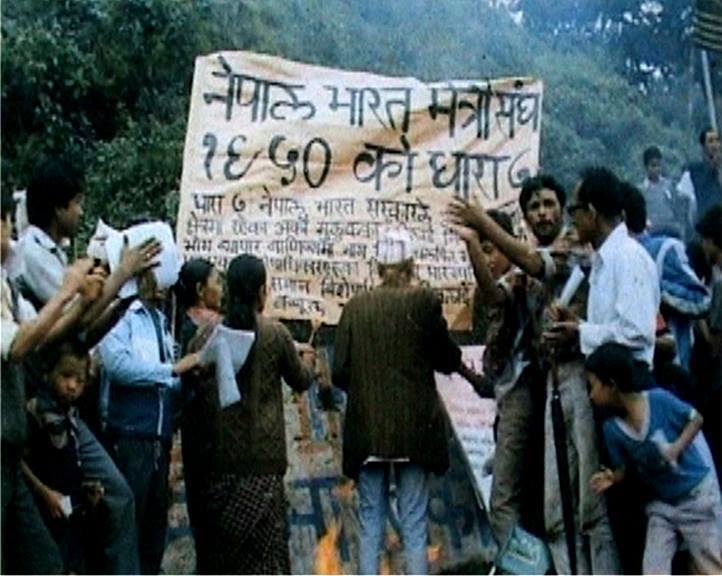
What the people in their ignorance failed to notice in the evident behavior and gesture of the rifle-toting CRP jawans were their open hostility and cock-sureness to do something drastic that was dripping all over all the place. The dead-pan expression accentuated by the American G.I.s type helmet to match their dark somber faces, while they patrolled their rounds, were all too ominous. This time they were determined to display their expertise. Everything, when added up, pointed to one single fact that they had standing orders to shoot on the slightest provocation.
The tragic event that unfolded itself in the afternoon of Sunday left little doubt as to how meticulously and painstakingly the entire gamut of massacre and manslaughter had been thought out and planned that was finally executed to ghastly perfection. In real Communist style.
Little wonder, the D.I.G. (C.I.D.), West Bengal, had been assigned to the task of conducting the whole operation. Perhaps, the ‘Operation Red Star’ in the Marxist terminology.
The psychological climate in which the entire plan seems to have been hatched may be traced to a basic human weakness. An overdose of misguided ambition. “But for his ambition, I slew him.” So said Brutus when Caesar lay slain by his own friends, Roman, and countrymen.
Mr. Binoy Chowdhury, the then acting West Bengal Chief Minister, was overambitious to establish his right of accession to the chair he temporarily occupied by mobilizing every bit of power his august office made available to him so that his multi-pronged action on all fronts would come as the final Coup de Grace delivered to completely uproot the G.N.L.F. movement in the Hills. As if Mr. Jyoti Basu, the Chief Minister, apparently failed to do just that. Mr. Buta Singh, the Union Home Minister, seemed to agree with Mr. Chowdhury. He agreed to furnish eight companies of CRP jawans to boost the sagging morale of the West Bengal administration…
As a matter of fact, the very imposition of 144 CrPC with everything it implied, to discourage the protest-demonstration was an act of flagrant violation denying the Constitutional rights of the people.
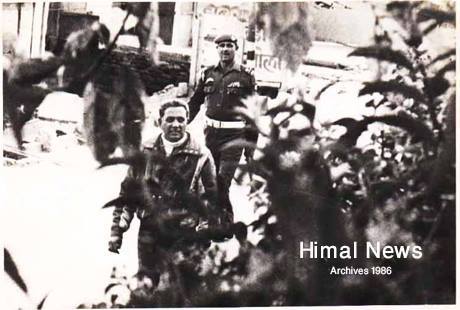
The very basics of the Fundamental Rights were trampled underfoot when prohibitory orders to silence the voice of the people was clamped in the pretence of maintaining law and order.
If unchallenged and unprovoked, the demonstrators would have assembled at the Mela Ground, as usual, to burn the copies of the said Articles of the treaty. Perhaps, the majority did not even know the implication of the act – the burning of the copies. That the people of the hills were so naïve and ignorant may be indicated by the fact, that when the curfew was clamped on the 26th of July, beginning from 6.00 p.m. the previous evening, many villagers were coming to town to see what the Curfew was like. They had to be sent back home by the sympathetic Army personnel. And then, as usual, the platform would have been adorned by the same run-of-the-mill bunch of Soap-box orators to blabber away their proto-typed and very often self-contradictory speeches, by now repeated umpteenth times – in the midst of thunderous clapping that sometimes would have little connection to the orator’s off-the-beat renderings.
If I remember right, in the last meeting held on the 19th of July, 1986, a group from the far corner of the eastern portion of the stadium suddenly clapped away when a lady-speaker was emotionally recounting the tragic drama of shooting in Kurseong on 25th May, 1986. That was perhaps the anti-climax of the day. At its worst, there would have been a slogan shouting of Ghising Zindabad with gusto and enthusiasm, and the crowd would have dispersed, ready to go home, thoroughly elated…
There was no stopping the people once they decided to go ahead with the programme, scheduled to be held on the Mela Ground. Slowly but surely, the town began to be thronged, at first by curious crowds of onlookers, who came in small groups to loiter around the town aimlessly, but with keen eyes to watch the mood and attitude of the patrolling CRP jawans.
As the tempo of outpouring mass began to swell, by now marching with determined steps and a sense of purpose; by 11.00 a.m., the patrolling jawans were virtually on edge, their innards tightening to a hardball. The expected inevitable just seemed around the corner.
As the hands of the clock struck 11.40 a.m. the town witnessed the first spurt of action when the jawans made the first charge of the day on a couple of isolated groups of students. About twelve in number were arrested and put under police custody. The arrest was made in the vicinity of the Kalimpong P.S. Another group of about twenty-five young boys and girls coming from the upper Cart Road were confronted by the CRP jawans in a bid to disperse the girls. The boys were apprehended and locked behind the hajat. By now the inside accommodation of the Police Station was almost filled to overflowing with boys confronted and arrested.
The spell of high noon saw the ominous panorama of converging columns of humanity from the far-flung outskirts of Greater Kalimpong – the outlying villages and small settlements like Lava, Algarah, Pedong and even those tiny villages scattered all along the Lava-Gorubathan road. Platoons of CRP jawans had already been kept posted at several key points to stem the inflow of the marching column of the crowd to prevent them from entering the heart of the town – the Mela Ground, the targeted venue.
By 1.20 p.m., this particular column of men, women, both old and young, and boys and girls of the age group of twelve to fifteen years had reached the intersection point of Rishi Road and R.C.Mintri Road, just beyond the Power House. They had been debarred by a cordon of rifle-toting jawans from entering the town premises…
The first blood of the day was drawn at about 1.15 p.m. when the CRP jawans intercepted the upcoming marchers from the 7th Mile, an earmarked area, on their way to town. The CRP jawans tried to disperse the crowd by throwing canisters, which attempt was foiled. The subsequent action on the part of the CRP jawans that followed was rather drastic and unexpected. They came out blazing with their guns that resulted in seven casualties. Two girls had their right thighs almost torn away; another, her ankle badly wounded…
Thus, the premier opening show of the first act of the ‘Bloody Drama’ had been made. The venue was the length of the Rishi Road between the Engine Ghar and the bend nearly two hundred feet down the road just above the Custom Office. The first shooting that started here brought most of the big-wigs to the scene of the firing, leaving the Head Quarters situated at the main junction to the charge of minor officials. At that very moment, the marching columns of demonstrators, the biggest and the loudest, made its sweeping thrust, coming as they were from the Bong areas via the East-Main Road, down the Ongden Road that, running parallel to the Mela Ground below, leads on to the Motor Stand. From the Motor Stand, the head of the procession made a stab for the R.C.Mintri Road, straight ahead, for God alone knows, why, as the proposed plan had been to assemble on the Mela Ground for the said programme.
It must be mentioned here that maximum effort had been directed to thwart and prevent the entry of the demonstrators into the Mela Ground. In other words, the display of the mass-protest on the Mela Ground was a forbidden act that would be dealt with utmost severity. All the four entry-points into the Motor Stand and then on to the Mela Ground had been completely sealed off by rifle-toting CRP jawans, with rifles held menacingly in their hands. Therefore, all earlier efforts by a smaller column to make a breakthrough had been foiled. Some, perhaps, did not dare. In their excitement, the marchers suddenly made their way straight ahead towards the R.C.Mintry Road that heads east through the lower portion of the town to join the Rishi Road, that runs parallel to it through the upper portion of the town, just beyond the Fire Brigade complex located at 10th Mile…
As the mighty column of demonstrators, snowballing as it forged ahead along the R.C. Mintri road (they were coming on) connects the Rishi Road to form a three-way junction. The CRP jawans who had been holding back the marchers from Algarah-Pedong-Lava (mentioned earlier), were taken aback by this sudden turn of event. However, discretion prevailed as they were hopelessly outnumbered by a column of more volatile marchers. No shooting took place at this point, as the marchers, though emotionally super-charged, were perfectly disciplined, their faculties intact. As this massive column of marchers made a U-turn to make a return journey via Rishi Road to the town, the protest-marchers pinned down at the junction also joined them to make an outrageously long procession column nearly a mile long.
As the head of this mighty procession reached the central junction of the town in the vicinity of the Central Bank and the Gompu’s (Hotel), the words of earlier firing, the first shooting spree of the CRP jawans in the premises of ‘Engine Dara’, leaked out to the emotionally-charged crowd of demonstrators. It was at this point, as hinted earlier, destiny intervened once again to divert the courses of the marchers from its intended destination, the Mela Ground. Instead of making a ninety degree left-turn, the head of the column forged straight ahead through the Main Road towards the Police Station about one thousand feet ahead. An instinctive reaction in response to the earlier shooting.
And at that very quivering moment of fateful decision, the tiny dot of time so infinitesimally brief, many a young people in the very prime of their youth, had reached a point of no return. They had already, as fate decreed, crossed the threshold – the ‘Laxman Rekha’ beyond which these brave young ones had a tryst with death.
When the tormented head of the emotionally-charged column of demonstrators shot ahead with shouts of ‘Jai Gorkha’, about fifteen to twenty CRP jawans, with rifles held ready to shoot and all standing in a single file across the Main Road began to retreat in their futile bid to stave off the advancing mob.
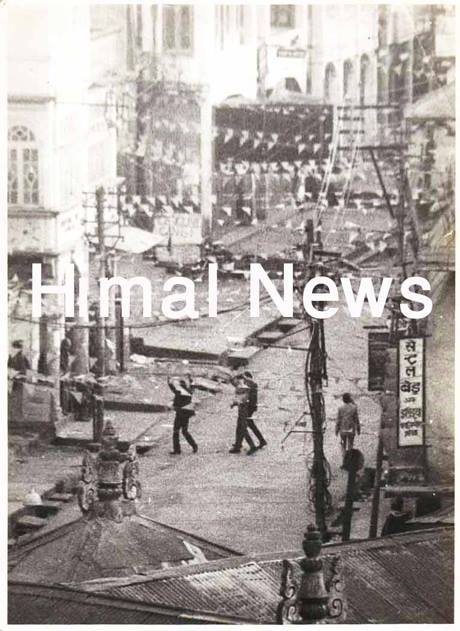
However, it must be particularly mentioned here that except for the attempt to forge ahead, not one single attack had so far been made on the CRP jawans, despite the earlier shooting, and despite the provocative display of hardwares by the CRP jawans almost on edge. Display of guns would not cow down or frighten the Gorkhas, once they believed that their demand was constitutionally right and viable, and that their aspiration to seek for themselves a place in the sun was perfectly human as fully envisaged in the Charter of Human Rights by the UNO. Let us not forget that.
Just when the head of the procession reached the junction just in front of the Police Station, a hail of stones of sizes big enough to be conveniently thrown, began to greet the advancing marchers. The stones came from the direction of the General Post Office building ahead, and from the second floor of the Boral Mansion directly above. Now, whoever masterminded the strategy of provocative incitement had its desired result in full measure. Thoroughly provoked, and at the end of their dither, the angry mob started pelting the CRP jawans with the same stones in retaliation.
This was the opening that the trigger-happy CRP jawans were looking for. No tear gas canisters were thrown, or any lathi-charge made to disperse the crowd. They simply came out shooting with the result that the Thana-junction area was littered with bodies of the dead and wounded. The people began to scatter and run in every possible direction…
Now with the shooting commenced at the junction of the P.S., the biggest tragedy of the day began to take shape, with the tail-end of the procession being somewhere far beyond the Kanchan Cinema area. The young people in procession now on the Main Road became the victims of cold-blooded murder, an uncalled for ‘Act’ that fully justifies the assumption of a ‘Jallianwalla Bagh’ repetition, as also endorsed by the position taken by the ‘CRP-Ambush-Squad’ mentioned earlier.
The Kalimpong Main Road, now made famous for the football team (always unpopular with the Kalimpong public for reasons unknown), it represents in the local tournament, particularly the tournament held in honor of the Independence Shield, suddenly became the ‘Valley of Death’ with buildings and houses towering on either side of it (Main Road) with narrow gullies and lanes in-between them.
Synchronizing with the firing up ahead at the Police Station area, a hail of bullets greeted the marchers entrapped on the Main Road. Those bullets were fired from the rifles of the CRP jawans, sitting in ambush on the house-tops on the left-hand side of the Main Road. It was a shooting spree they could have carried out blind-folded.
The Main Road suddenly became littered with the bodies of young boys and girls, all in their teens. Some of them had khukuri brandished in their delicate hands, and the slogan of ‘Jai Gorkha’ on their lips, as they went down with terrible head injuries sustained by the cold-blooded assassins’ bullets. They all died with their boots on…
As the shooting became intensified, at times quite at random, and utterly senseless, pandemonium broke loose, with panicked crowd running helter-skelter in every possible direction. This was the first and a most natural reaction to a situation the peace-loving hill-people have never had the occasion to confront with. But, by this time, the blood of the young men who saw with their own eyes the bloody massacre being committed by these CRP demons without the slightest regard for human life, began to rise to boiling point.
Suddenly, there was a wave of reprisal that burst forth on many a front. The head of one CRP demon rolled, the chopped head allegedly landed up-right with the helmet intact. The upturned moustache fluttered for a brief second that synchronized with the fluttering of the eye-lids, and the head was dead. The beheaded body ran for a short distance with blood gushing out and fell headlong (or shoulder long since the body had no head) in a dead-heap…
In their panic to get away from the bullets of the CRP jawans shooting from their ambush position, the crowd in an attempt to make their escape through the gullies and lanes down into the Ongden Road, were caught squarely by the CRP jawans standing at the end point of the lanes. Another shooting spree was going on here on the Ongden Road and its vicinity just above the Mela Ground, by a group of CRP braves. They were fortified by a small embankment provided by the sloping Ongden Road, with the approach road that branches out in a sharp U-turn leading to the Nehru Manch on the Mela Ground, and down to the Baghdhara Road further below. The funniest thing is that while you are shooting at point-blank range to the panicked, fleeing crowd, the shooters do not require a trench or, for that matter, an embankment for their own safety against counter-attack. ‘Were they fighting the enemies on the battle front?’
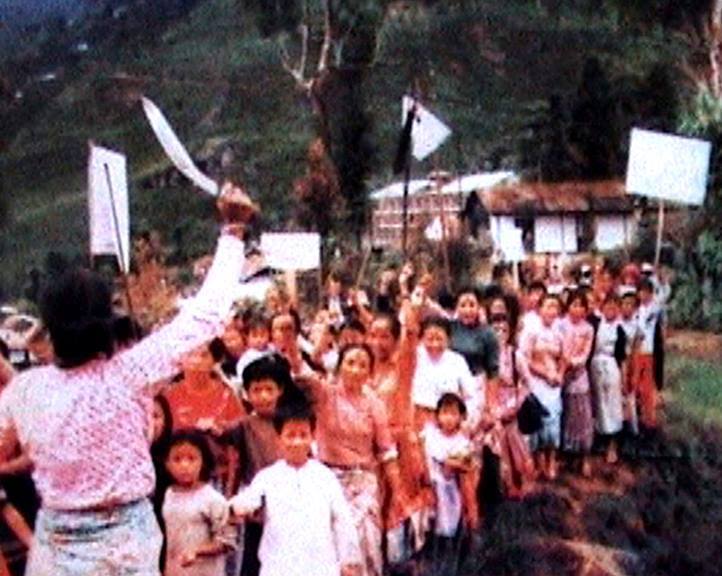
From the vantage point, the CRP jawans fired away at the fleeing mass in three different directions: one towards the Ongden Road leading to the Motor Stand; another towards the Nehru Manch and Baghdhara; and still another towards the head of Ongden road close to the Frontier Office.
Six dead bodies were recovered from under the overgrowth and weeds-covered slope that extends from the top of the Ongden Road in front of the Frontier Office down to Baghdhara, a natural source of spring (dhara) which has been running since time immemorial – a major source of water supply for a number of Municipal wards of the town. Until now, the attack on the CRP jawans had been confined to the act of hitting back in direct retaliation on the spur of the moment, to what those brave, dying women were meted out – the fatal bullet wound that killed them. In fact, the yellow streak inherent in those trigger-happy CRP jawans began to spill over the moment women, old and young, began to resist and fight back tooth-and-nail as shown by the examples cited on the foregoing pages; the final spurt of do-or-die attack with khukuris and a stout heart by the young Gorkhas that finally subdued the killers to a whimpering dog…
Until now, the attack on the CRP jawans had been confined to the act of hitting back in direct retaliation on the spur of the moment, to what those brave, dying women were meted out – the fatal bullet wound that killed them. In fact, the yellow streak inherent in those trigger-happy CRP jawans began to spill over the moment women, old and young, began to resist and fight back tooth-and-nail as shown by the examples cited on the foregoing pages; the final spurt of do-or-die attack with khukuris and a stout heart by the young Gorkhas that finally subdued the killers to a whimpering dog…
The first attack, perhaps a deliberate one, was made on the D.I.G., and the circumstances leading to this unfortunate happening is, indeed, baffling. The whole thing, the entire gamut is shrouded in mystery. The episode as it happened is deeply regretted. According to informed sources (and there are many with as many versions), the alleged attack was made while the D.I.G. was standing on the verandah of the Frontier Office, busy talking over the walkie-talkie, while in the midst of violent commotion and confusion of shooting and running, that were going around in the vicinity of the Kalimpong P.S. The alleged attack was made with a kukri, a number of assaults, as they say, by a single attacker; and the attacker, without being captured or shot at, simply dissolved into the crowd.
It was, perhaps, destiny again that masterminded the strangest drama of the day. How else can the episode be explained – the entire gamut of sequence from the first sudden attack, attack going unimpeded, and the final vanishing act. As if the whole thing was a carefully constructed plot, which it definitely was not. After all, the D.I.G., as the head of the entire operation and the proceedings of the day, must have had his personal security guards, letting aside other officials like the SDO, SDPO, and the CRP commandant. He could not have be standing there all alone, speaking over the walkie-talkie to his girlfriend! …
As the wounded DIG was being rushed to the Military Hospital, two jeeps full of CRP jawans that followed the DIG’s jeep ahead were shooting away at random as the jeep carrying there were running at a break-neck speed. It must be truthfully mentioned here that no single bullet hit a human target though the road between the Municipality building and the Kalimpong PS was almost choked with masses of people gripped in varying degrees of emotional trauma as the three jeeps shot through the crowd in their way to the Military Hospital.
By 4.00 p.m., the tide of cold-blooded violence perpetrated by the CRP jawans began to ebb, as groups of young men mounted their counter-attack over a wide area. One young man, Sri Subodh Subba, a Black Belt in karate, went down fighting bare-handed in an attempt to save young children in the age group of 6 to 8 years, when CRP’s rifle bullets began to whistle past in the vicinity of the Central Bank and Gompu’s. His karate attack laid out three jawans while the fourth jawan shot Shri Subba through his left eye blowing off the back of his head as the bullet propelled out through the other side leaving a gory, gapring hole in the back of his head…
Suddenly, to these young men, death lost its terrifying meaning – that stamp of utter finality which all mortals dread. Instead, it was normal, inevitable fact of life to be accepted, even embraced bravely, as their fallen friends and comrades had done before them the same day. Almost blinded by tears in their eyes, these young men with naked kukris in their hands, went on a rampage that left many CRP jawans mortally wounded and felled; many of them making hasty retreat to find shelter in the safety of private homes.
By 4.45 p.m., the retaliation was so complete that not one single shot was fired by the now whimpering CRP jawans on the battle-charged Gorkhas completely gone berserk. The attack on the CRP jawans were immediately withdrawn, once their rifles became silent. Right in front of the rifle-toting CRP jawans, four state buses were set on fire and pushed down into the ditch. Totally subdued and demoralized, the entire rank and file of the CRP jawans with rifles in their trembling hands, stood witness to the entire carnage of destruction. At that moment, if they had done some shooting to prevent the destruction of public properties, that was the time to do it, when their action would have been fully justified. What a travesty of human failure, indeed!!!
The general consensus of the media reporting on the shooting that took place on the 27th July, reflects the same old run-of-the-mill types of a fracas that our brave CRP jawans normally involved in the cities of this sub-continent. For instance, “There was a communal riot in such and such place, that led to the senseless killings, the burning of shops and destruction of public properties. Then the CRP jawans intervened by first using tear-gas canisters followed by lathi charges. Then the inevitable happened – the shooting and the ruthless killings.”
By 5.30 p.m., the ugly mob of battle-charged young Gorkhas became almost uncontrollable, with platoons of CRP jawans completely subdued and tamed even with rifles, the Army had to be called in to restore the fast deteriorating law and order situation in the town. As the clock struck six, the Army jawans in their battle-dress took over from the Police Station point to spread out over the town in systematic, machine-like precision. But as the Army jawans took over the situation in hand, their systematic presence all over the key points of disturbances was one of security and reassurance that all was well. The unconcerned looks that were almost friendly and understanding, as they patrolled the town area exuded confidence and hope that almost renewed our faith in the institution we had always believed in. with the advent of the Army jawans in the panic-torn town of Kalimpong, the Centre, with its message of the government of the people, by the people and for the people had, at last, intervened.
This short narrative would be incomplete without mentioning the stellar role played by that section and category of humanity in which love and compassion for the fellow-beings in distress almost inevitably rouse in them their inborn capacity to rise to the occasion to serve them, irrespective of the circumstances and situation that might summon them to their calling…
In spite of the Curfew clamped since 6.00 p.m. on the evening of the 27th, groups of self-appointed volunteers took up in respective duties in the hospital. Emergency funds were raised (there was no dearth of contributions) to meet the expenses for medicines, special food, vitamin, and tonics required for the wounded. No stones were left unturned to forge a bond of comradeship amongst volunteers who stood to the respective posts assigned to them so that the injured and the suffering kith and kin could feel a deep sense of security in the selfless service of those wonderful young people who rendered it.
The spirit of sacrifice displayed in the face of personal risk and danger, when those wonderful people went about their job of collecting the wounded; the selfless service of those volunteers who tended to the needs of the sick and the sufferings in the hospital are glimpses of sparks divine in man that help to revive and restore one’s faith in the goodness of human race.
Mr. Jyoti Basu, the Hon’ble Chief Minister of West Bengal, in his leaner days as a rising Communist leader had the courage to tell Mr. Bidhan Chandra Roy, the then Chief Minister, as well as a towering personality of the time, that the hill district of Darjeeling had all the makings for the grant and award of statehood. That was way back in 1955. But as a towering figure himself now in today’s Bengal holding the august office of the Chief Minister, Mr. Jyoti Basu lacks the courage to accept and implement what he himself propounded – the honorable fulfillment of the very cause he so courageously championed in favor of the people of the hills of Darjeeling some three decades ago…
Resigned to their fate and yet with smiling faces, the Gorkhas of Darjeeling Hills have endured with saintly patience everything that was dished out to them, without a whimper.
But the ominous handwriting on the wall which appeared with the expulsion of more than ten thousand Gorkhas from Meghalaya, who were driven out right across the borders of two states, Assam and West Bengal, and dumped across Kakari Bhitta in Nepal. As act committed in flagrant violation of the text of the 7th Article of the Indo-Nepal Treaty of 1950. It just went down the drain. And the Nepal government took the beating without a whimper. And again the slogan that ‘Assam for Assamese’, and the ‘Punjab for Punjabis’ and not even the Hindu Punjabis began to be heard in rising crescendo, the Gorkhas residing in India seemed to have got the message. Now, all we want is the acceptance in spirit and deed, the identity of the Gorkhas as an entity standing at par, vis-à-vis their Indian counterparts in a country we so dearly loved and served.
And, what’s wrong with that utterly human aspiration?!!!
Today, there is a big question – as large as life itself – that looms uppermost in the mind of each Gorkha who has been living in India since generations: Should the Gorkhas living in India as domiciled second rate citizens are asked to shed their blood on the battlefront and die for India?
The end!!
TheDC editorial note: The Kalimpong Massacre is a pivotal moment in the history of Darjeeling, and literally marks the day when our beautiful, peaceful, silent, and tolerant hills lost its innocence. The anger which was given birth on July 27th, 1986… ended up engulfing all of the hills, Terai and Dooars. Thousands of youth lost their lives, thousands of mothers lost their sons and daughters, thousands of wives became widows and thousands of children became orphans.
The ensuing Gorkhaland Andolan and the betrayal by Subash Ghising and later by Bimal Gurung has left over a million Gorkhalis angry and frustrated.
Will we ever get justice? will we ever find an equitable place in our great nation?
Perhaps the answer lies in us – each of us, and it will serve us well if we strive for Gorkhaland together, instead of blindly following a particular politician.
We salute the spirit of our martyrs, for it is their sacrifice, that continues to inspire us to strive for a better-brighter future.
Jai Gorkha, Jai Gorkhaland!!
An account of the July 27th, 1986 massacre, recorded by Mr. B Khaling and later reproduced in an online magazine – Cafe Dissensus. We are thankful to the Magazine for giving us permission to re-produce the amazingly vivid and heartbreaking narrative, which changed the destiny and people of Darjeeling forever.

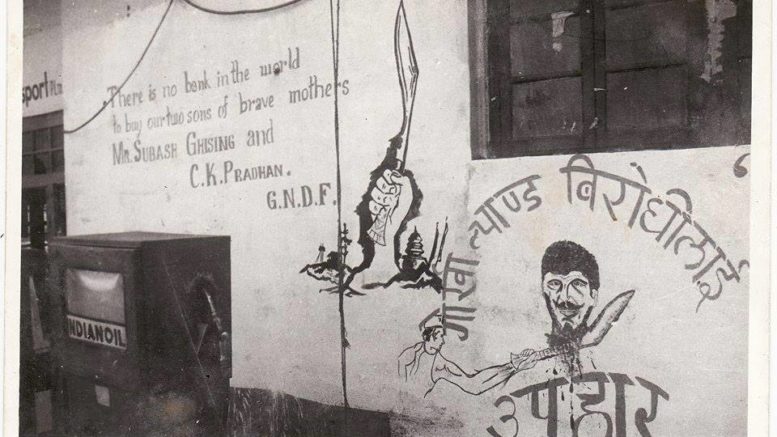
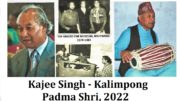
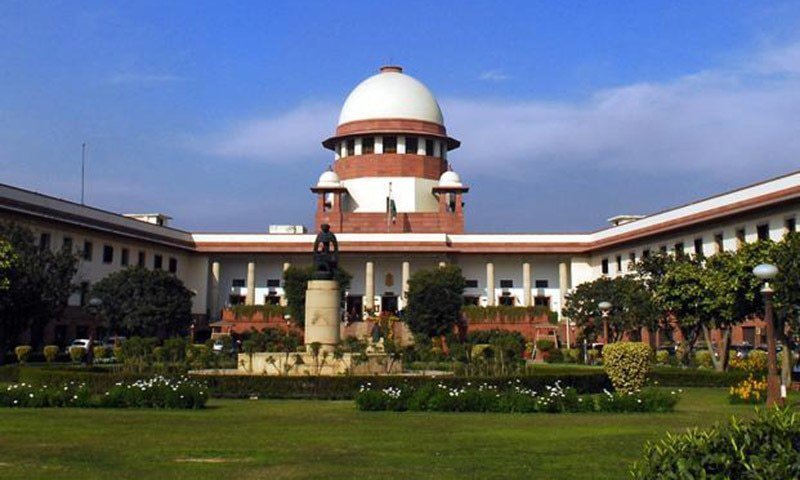
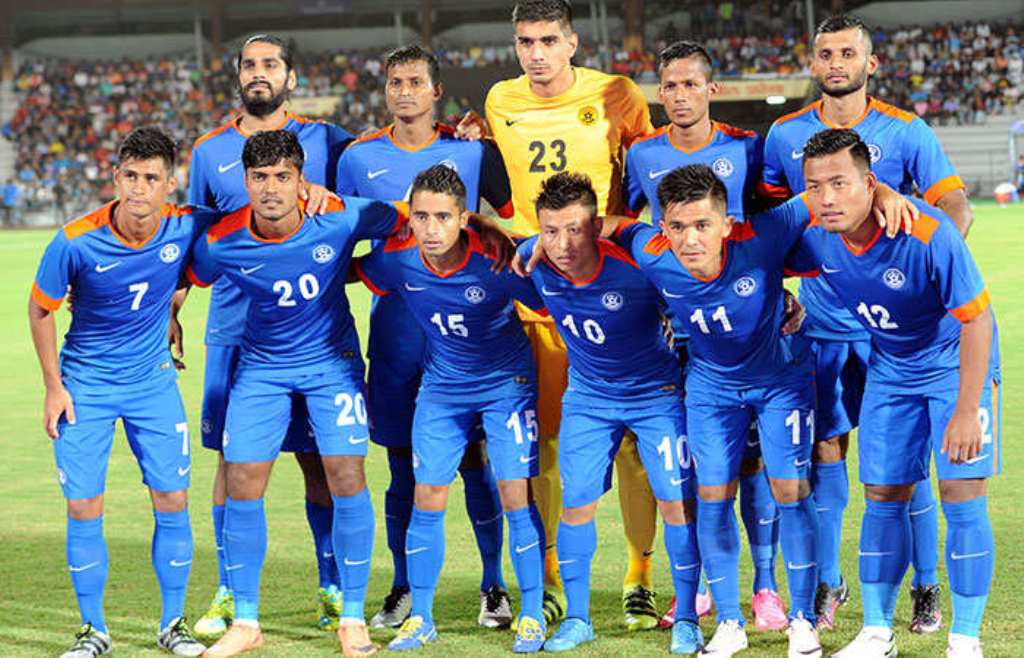
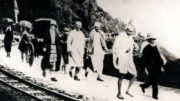
Leave a comment